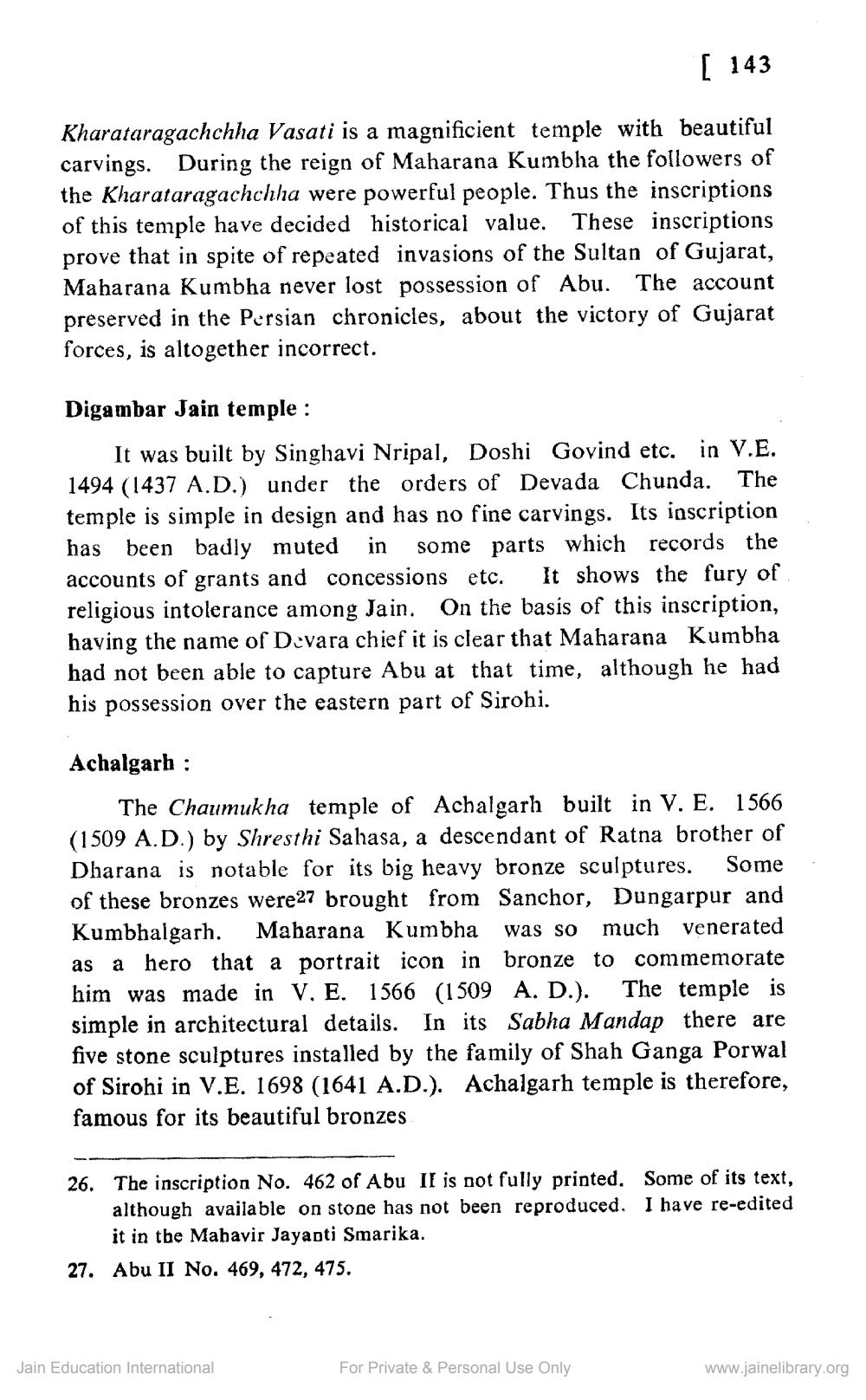________________
[ 143
Kharataragachchha Vasati is a magnificient temple with beautiful carvings. During the reign of Maharana Kumbha the followers of the Kharataragachchha were powerful people. Thus the inscriptions of this temple have decided historical value. These inscriptions prove that in spite of repeated invasions of the Sultan of Gujarat, Maharana Kumbha never lost possession of Abu. The account preserved in the Persian chronicles, about the victory of Gujarat forces, is altogether incorrect.
Digambar Jain temple :
It was built by Singhavi Nripal, Doshi Govind etc. in V.E. 1494 (1437 A.D.) under the orders of Devada Chunda. The temple is simple in design and has no fine carvings. Its inscription has been badly muted in some parts which records the accounts of grants and concessions etc. It shows the fury of religious intolerance among Jain. On the basis of this inscription, having the name of Devara chief it is clear that Maharana Kumbha had not been able to capture Abu at that time, although he had his possession over the eastern part of Sirohi.
Achalgarh :
The Chaumukha temple of Achalgarh built in V. E. 1566 (1509 A.D.) by Shresthi Sahasa, a descendant of Ratna brother of Dharana is notable for its big heavy bronze sculptures. Some of these bronzes were27 brought from Sanchor, Dungarpur and Kumbhalgarh. Maharana Kumbha was so much venerated as a hero that a portrait icon in bronze to commemorate him was made in V. E. 1566 (1509 A. D.). The temple is simple in architectural details. In its Sabha Mandap there are five stone sculptures installed by the family of Shah Ganga Porwal of Sirohi in V.E. 1698 (1641 A.D.). Achalgarh temple is therefore, famous for its beautiful bronzes
26. The inscription No. 462 of Abu II is not fully printed. Some of its text,
although available on stone has not been reproduced, I have re-edited
it in the Mahavir Jayapti Smarika. 27. Abu II No. 469, 472, 475.
Jain Education International
For Private & Personal Use Only
www.jainelibrary.org




